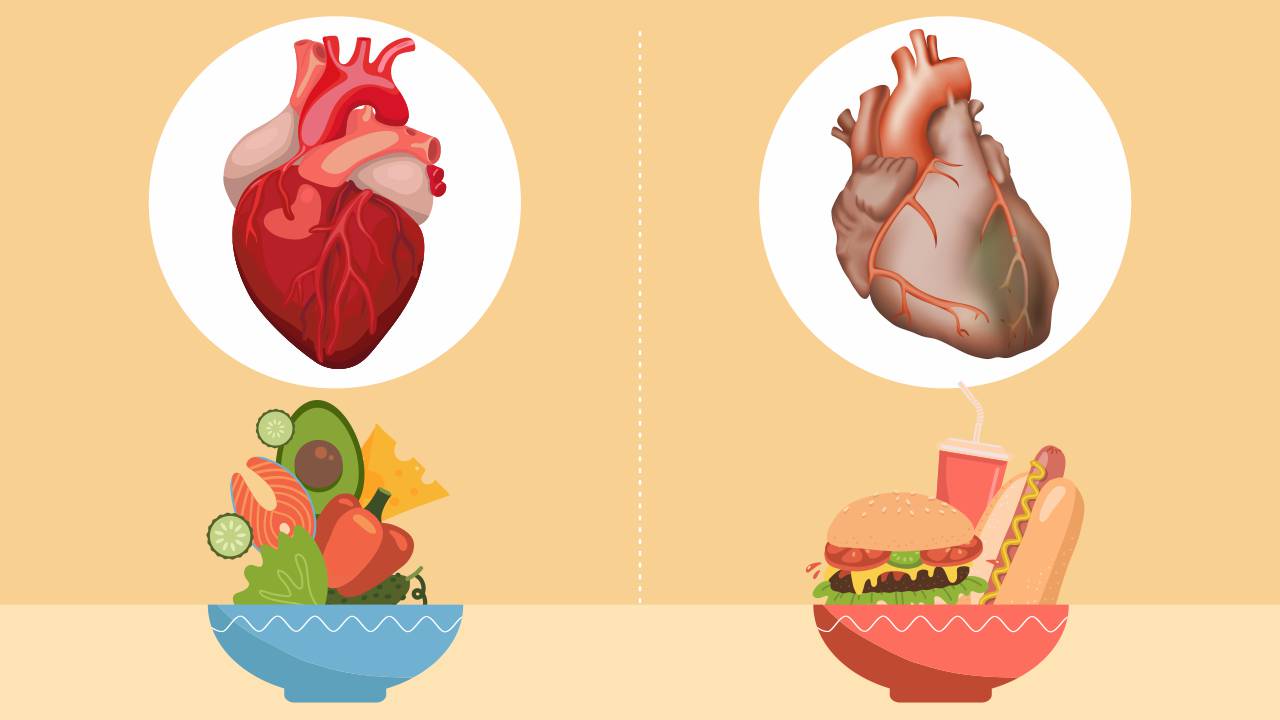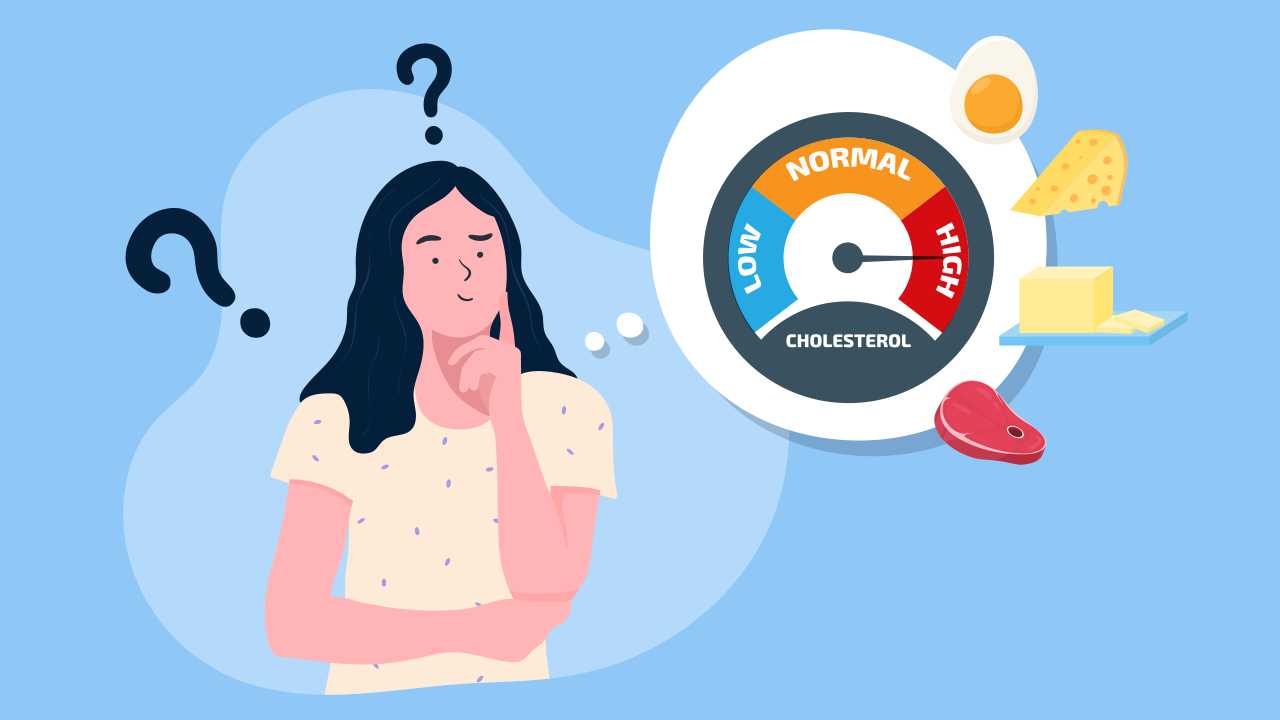
Eat Smart for a Healthy Heart

The heart is a muscle that pumps blood to various parts of your body round the clock. It’s like the body’s engine, and like every engine, requires fuel in the form of sound nutrition, right exercise, and adequate sleep to function optimally.
Unfortunately, contemporary life surrounds us with foods that have quantities of fat, sugar, and salt that are unhealthy for the heart. We are also mostly glued to our chairs as well as beds in a sedentary existence. To top it all, unmanaged stress from our day-to-day lives can take a toll on heart health.
Coronary Heart Disease (CHD) is the term that describes what happens when your heart’s blood supply is blocked or otherwise interrupted by a build-up of fatty substances (plaque) in the blood vessels (arteries), which transport oxygenated blood to the heart muscle. This may be a result of some or all of the contributing factors being left unchecked.
There are some risk factors that we cannot control when it comes to heart disease like age, ethnic background, and family history. But we can certainly control our diet and lifestyle
Building healthy eating habits may prevent disease by reducing the effect of other diet-related risk factors such as diabetes, high cholesterol, and hypertension.
Importance of healthy eating in coronary heart disease
A nutritionally poor diet that focuses on a high intake of refined grain products such as white bread, white rice, and breakfast cereals; foods with added sugars such as cold drinks, ice-cream; or loaded with salt and unhealthy fats such as bakery products and fast food — is a major risk factor for heart disease and related metabolic disorders such as hypertension, diabetes, and obesity.
Such a diet may cause a build-up of plaque in your arteries. Arteries or blood vessels are small tube-like structures. When plaque builds up in this tube, it narrows down the passage, reducing the blood flow to your heart, lessening the amount of oxygen as well as nutrients reaching the body.
This reduction causes symptoms such as chest pain and shortness of breath. If left untreated, CHD can lead to life-threatening conditions like a heart attack or stroke.
The way out is a healthy balanced diet. So what foods should you eat and not eat?
Foods to include
Fruits and vegetables
Most fruits and vegetables are naturally low in fat and calories. They are sources of many essential nutrients such as potassium, dietary fiber, vitamin A, vitamin C, and folate.
Dietary fiber from fruits and vegetables helps reduce blood cholesterol levels and may help reduce the risk of heart disease.
Include five servings of a variety of fresh fruits and vegetables in your diet to consume adequate amounts of essential vitamins and minerals.
1 serving of fruit
- 1 medium fruit
- 100% fruit juice (150 ml)
- ¼ cup of dried fruit
1 serving of vegetable
- 100g of raw or cooked vegetables
- Vegetable juice (150ml)
- 2 cups (100g) of raw leafy salad greens
According to the U.S. Department of Agriculture (USDA), adult men and women should eat 1 1/2 to 2 cups of fruit and 2 1/2 to 3 cups of vegetables per day.
| Fruits and veggies to moderate/ avoid | Fruits and veggies to choose instead |
|---|---|
| Coconut Vegetables with creamy sauces Fried or breaded vegetables Canned fruit packed in heavy syrup Candied dried fruit | Fresh or frozen vegetables and fruits Low-sodium canned vegetables Canned fruit packed in juice or water |
Whole Grains
Whole grains are high in dietary fiber, low in fat, and rich in vitamin E, iron, selenium, zinc, and B-complex vitamins.
The high fiber content of whole grains will help regulate your cholesterol level, maintain blood pressure, help with weight management, and support healthy digestion. Make at least half of your grains whole grains.
Refined grains are milled – a process that removes the outer covering (bran) and germ. This gives grains a finer texture and improves their shelf life, but it also removes dietary fiber, iron, and many B vitamins. For instance, refined wheat flour, white rice, and white bread.
Adult men and women should have 6-8 and 5-6 servings of whole grains respectively per day.
1 serving of grain (16g of whole grain ingredient)
- 1 slice of bread
- 1/2 bowl (50g) of ready-to-eat cereal
- ½ cup of cooked rice, cooked pasta, or cooked cereal
- 1 ½ tbsp of wheat flour
| Grains to moderate/ avoid | Grains to choose instead |
|---|---|
| Doughnuts, biscuits, cakes, muffins White rice Refined wheat flour (maida) White bread Cornflakes and other breakfast cereals Refined flour pasta and noodles Cornbread | Whole wheat, sorghum (jowar), pearl millet (bajra), finger millet (ragi/ nachni), foxtail millet etc. Brown rice, barley, buckwheat, quinoa Whole grain wheat flour 100% whole grain bread or 100% whole wheat bread High-fiber cereal with 5g or more fiber in a serving Whole grain pasta Oatmeal (steel-cut or regular) |
Healthy fats
Fats are essential for the optimum functioning of the human body, but we need to consume them in a limited amount.
Saturated and trans fats raise the low-density lipoproteins (LDL) which are considered unhealthy, whereas the monounsaturated fatty acids (MUFA) and polyunsaturated fatty acids (PUFA), which lower LDL, are considered beneficial.
Also read: Dietary Fats: How to Choose Right and Eat Smart
Regardless of their types; all fats provide 9 kcal of energy per gram.
A standard low-fat diet contains about 30% or less of its calories from fat. For instance, if your calorie intake is 1,500 calories per day, then your fat intake should be 50g per day.
This includes both visible as well as invisible fat sources. One can include 3-4 teaspoon of fats/ oils a day.
| Fats to moderate/ avoid | Fats to choose instead |
|---|---|
| Deep fried foods Fatty meats, red meat Butter, cream cheese Palm oil, margarine, shortenings Full-cream milk | Walnuts, flaxseeds, chia seeds Fish like tuna, salmon, sardines Skinless chicken, seafood, and lean meat Olive oil, canola oil, sunflower oil, safflower oil, peanut oil, and soybean oil Low-fat dairy products such as milk, yogurt, sour cream, and cheese Avocado |
Low-fat protein
It includes all foods made from seafood; meat, poultry, and eggs; beans, peas, and lentils; and nuts, seeds, and soy products.
Low-fat protein sources provide vital nutrients for the health and maintenance of your body. Reducing red meats, especially processed meats, and increasing fish, nuts, legumes, and possibly fermented dairy products are likely beneficial for heart health.
Adult men and women should have 6-7 and 5-6 servings of protein sources respectively per day.
1 serving of protein
- 100g of meat, poultry, or fish
- 1 bowl (100g) of cooked beans
- 50g of eggs (1 whole)
- 15g of peanut butter (1 tablespoon)
- Handful of nuts or seeds (15g)
| Proteins to moderate/ avoid | Protein foods to choose instead |
|---|---|
| Full fat milk and dairy products Organ meats such as liver Hotdog, sausages, bacon Fried meats | Low-fat milk, yogurt and cheese Fish like salmon, sardines Eggs Skinless poultry Legumes Soybeans and products |
Salt and sugar
Both are abundant in many of the packaged foods we buy — think salty chips or sugary cookies.
High sodium consumption (>2 g/ day, equivalent to 5 g salt/ day) and insufficient potassium intake (less than 3.5 g/ day) contribute to high blood pressure and may increase the risk of heart disease and stroke.
WHO recommends adults to consume less than 5g of salt (just under a teaspoon) of salt per day.
Consumption of excess sugar may lead to weight gain and in turn cause insulin resistance, obesity, and diabetes. Therefore it is recommended to reduce your intake of free sugars ie, all sugars added to foods or drinks, as well as sugars naturally present in honey, syrups, fruit juices, and fruit juice concentrates.
WHO recommends that you consume no more than 6 teaspoons or 25g of free sugar per day but ideally should be capped at 1-2 teaspoons per day.
Smart heart-friendly alternatives to satisfy your taste buds
| Foods to moderate/ avoid | Foods to have instead |
|---|---|
| Sev puri or fried samosa Cheese sandwich Chola bhatura Milkshake or ice-cream Sweets Fried chips Egg fried rice Chicken biryani Regular dosa Naan or rumali roti Puri Pakoda Margarine or butter | Boiled chana chaat or sprouts chaat Hung-curd vegetable sandwich Chola paratha Curd or yogurt with fruit Dried fruits Khakra Egg brown rice pulao Chicken curry and brown rice Moong dal dosa (pesarattu) Tandoori roti Phulka Vegetables and oats tikki Ghee |
Whether you’re looking to improve your heart health, or have recently been diagnosed with high cholesterol or high blood pressure, these heart-healthy diet tips may help you better manage these conditions, and considerably lower your risk of a heart attack or stroke.
References
1. Khan MA, Hashim MJ, Mustafa H, et al. Global Epidemiology of Ischemic Heart Disease: Results from the Global Burden of Disease Study. Cureus 2020; 12: e9349.
2. Underlying Cause of Death, 1999–2018. Centers for Disease Control and Prevention – WONDER Online Database. Atlanta, GA: Centers for Disease Control and Prevention; 2018. https://wonder.cdc.gov/ucd-icd10.html (accessed Mar 12, 2020).
3. Lim SS, Vos T, Flaxman AD, et al. A comparative risk assessment of burden of disease and injury attributable to 67 risk factors and risk factor clusters in 21 regions, 1990-2010: a systematic analysis for the Global Burden of Disease Study 2010. Lancet 2012; 380: 2224–60.
4. Krauss RM, Eckel RH, Howard B, et al. AHA Dietary Guidelines. Revision 2000: A Statement for Healthcare Professionals From the Nutrition Committee of the American Heart Association. Circulation 2000; 102: 2284–99.
5. Salt Reduction. World Health Organization. 2020; published online Apr 29. https://www.who.int/news-room/fact-sheets/detail/salt-reduction (accessed May 2, 2021).
6. Limit fat, salt and sugar intake. World Health Organization – EMRO. http://www.emro.who.int/nutrition/reduce-fat-salt-and-sugar-intake/index.html (accessed May 2, 2021).
7. What is my plate? U.S. Department of Agriculture. https://www.myplate.gov/eat-healthy/what-is-myplate. (accessed May 2, 2021).
8. Srinath Reddy K, Katan MB. Diet, nutrition and the prevention of hypertension and cardiovascular diseases. Public Health Nutr 2004; 7: 167–86. https://www.who.int/nutrition/publications/public_health_nut5.pdf (accessed May 2, 2021).














